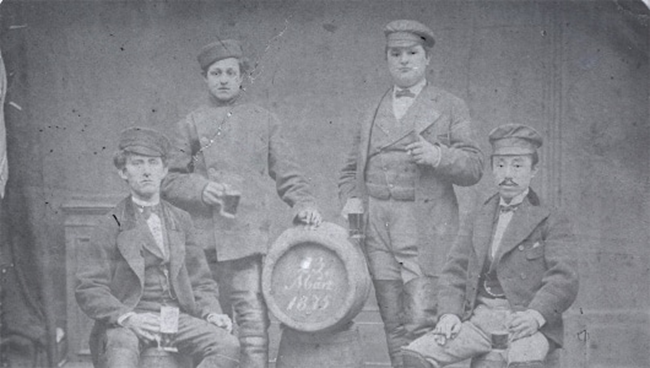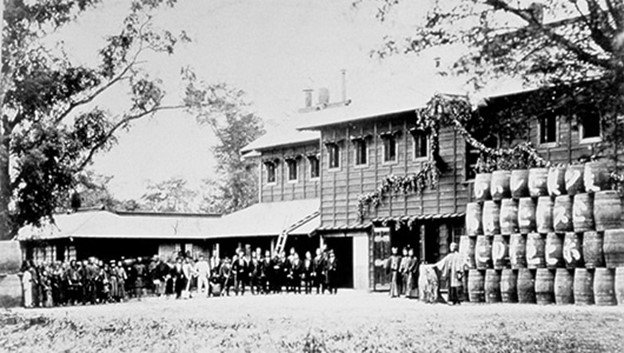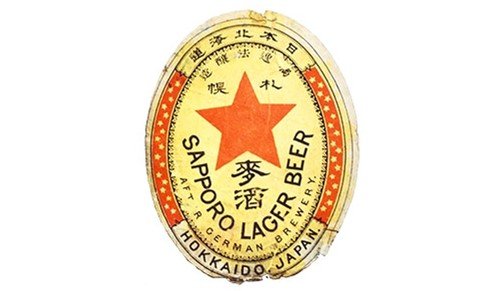Sapporo Premium Beer Review - Liquid Japanese Heritage
Despite being Japan’s oldest beer brand, Sapporo’s Foundation (1876), is European in origin. Thanks to the rebellious nature of its original brewmaster Seibei Nakagawa. Having fled from Japan in 1865, which at the time was strictly forbidden and punishable by execution, the then 17 year old Nakagawa spent the following years travelling Europe, before becoming a certified brewmaster at the Fürstenwalde plant of the Berlin Beer Brewery. Upon his return to Japan, Nakagawa used his newly learned European brewing methods to create the Sapporo Premium beer we drink today.
Though founder and fellow returning European traveler Hisanari Murahashi intended to brew beer in Tokyo, upon the advice of Nakagawa, the city of Sapporo in Hokkaido was chosen to be the place of Sapporo Beer’s first brewery and namesake. Sapporo, the largest city in the northernmost island of Japan was chosen in order to allow for Nakagawa’s German brewing methods which required a significant amount of ice, something which Hokkaido is notable for. The city of Sapporo itself is proud of its wintery climate, hosting a 7-day snow festival each year, featuring hundreds of snow and ice sculptures. With the brewery adopting its northern location, Sapporo Beer in turn chose the North Star as its symbol.
These German inspired methods means that Sapporo Premium is an incredibly refreshing beer when served ice-cold. This coolness is enhanced by its signature 650ml steel can. The can itself is part of the ‘premium’ experience of Sapporo Premium due to the added heftiness of the steel can. This creates the illusion of importance, standing out from the typical beer can you find on the shelf. Sapporo presents pride within its craft, even if it is still a mass-produced beer. Originally coming with a removable top, the ‘Kappu Nama,’ which roughly translates as ‘cup draught,’ was intended to replicate drinking from a tumbler glass, creating as close to the draught experience as possible. However, if you do choose to pour Sapporo Premium into a glass, you will find a pale golden lager akin to its European counterparts. Having a large head similar to European pilsners.
At 5.0 % ABV, Sapporo Premium is a decent strength. With the generously sized can being over a pint, the slightly more premium price you would pay is arguably worth it for a great tasting beer. Sapporo Premium is very light and drinkable with pleasant citrus notes in both taste and aroma, similar to though perhaps less notable than Blue Moon Belgian White. While Sapporo Premium is derived from European brewing methods, Sapporo is distinct enough in its flavour to warrant trying for those who enjoy European lagers or are simply looking for a crisp and refreshing beer that goes down easily.
I would certainly rank Sapporo Premium highly amongst comparable European and Asian Beers. It certainly deserves its Premium name, and although not as widespread here in the UK as rival Japanese beer Asahi, it is not surprising that Sapporo is the bestselling Asian Beer in the United States. Much of the Premium nature does come from the large tumbler cans but perhaps if the 330ml glass bottles of Sapporo Premium were more readily available in UK supermarkets, Sapporo’s popularity here would grow. Though more distinct in taste than the crate lagers you would typically find in the supermarket, Sapporo has a cool crispness and drinkability that would fit well with higher end crate beers such as Birra Moretti. I would recommend seeking out Sapporo Premium even just for enjoying the experience of the Kappu Nama, but a lack of cheaper and smaller bottles makes it difficult to recommend Sapporo Premium as a regular choice.
If you liked the Sapporo Premium beer review, please feel free to share your comments below. We are happy to hear from you!
You can buy Sapporo Premium on Amazon by clicking here.
Written By Benjamin Stewart
Follow Ben on Instagram @___benstewart___ or by clicking here.
Read our other reviews here.
Follow OnlyCans on Instagram here.
Follow OnlyCans on Facebook here.
Follow OnlyCans on LinkedIn here.
Follow OnlyCans on TikTok here.



